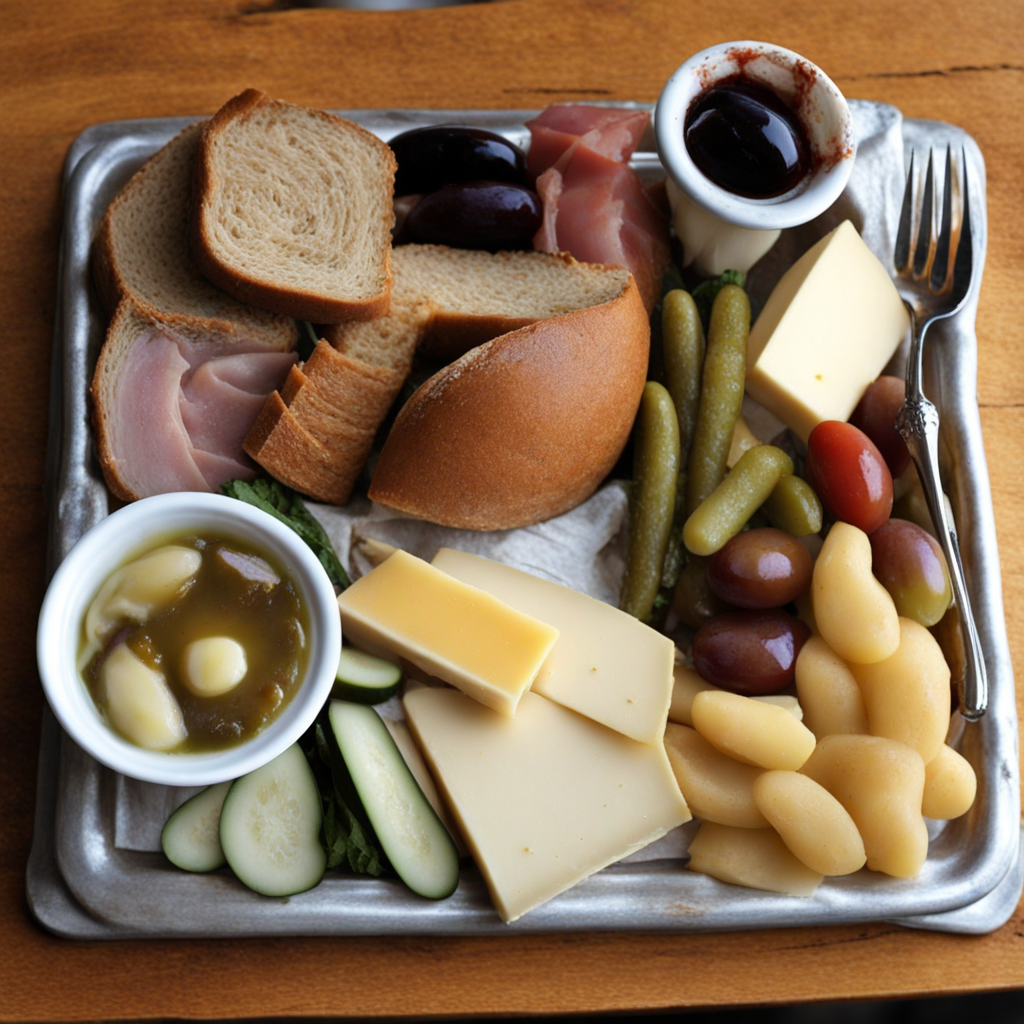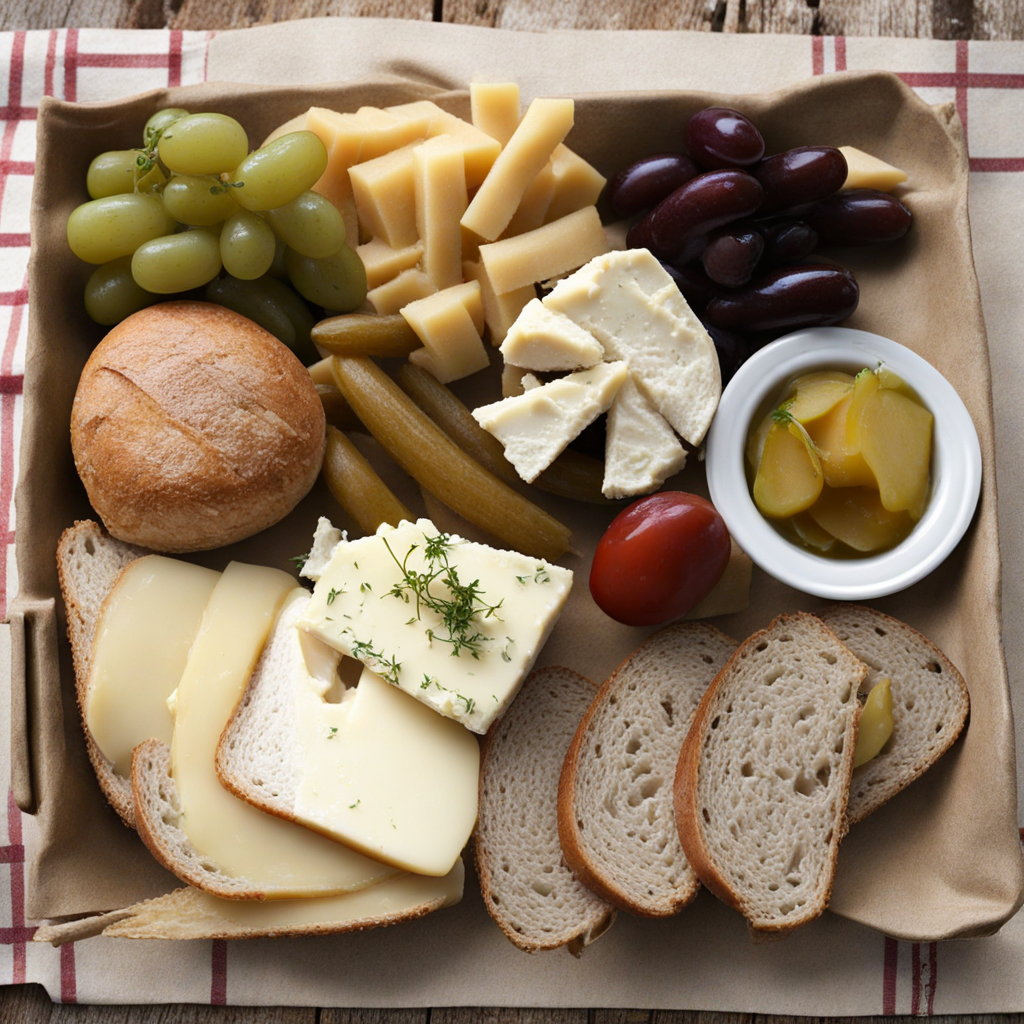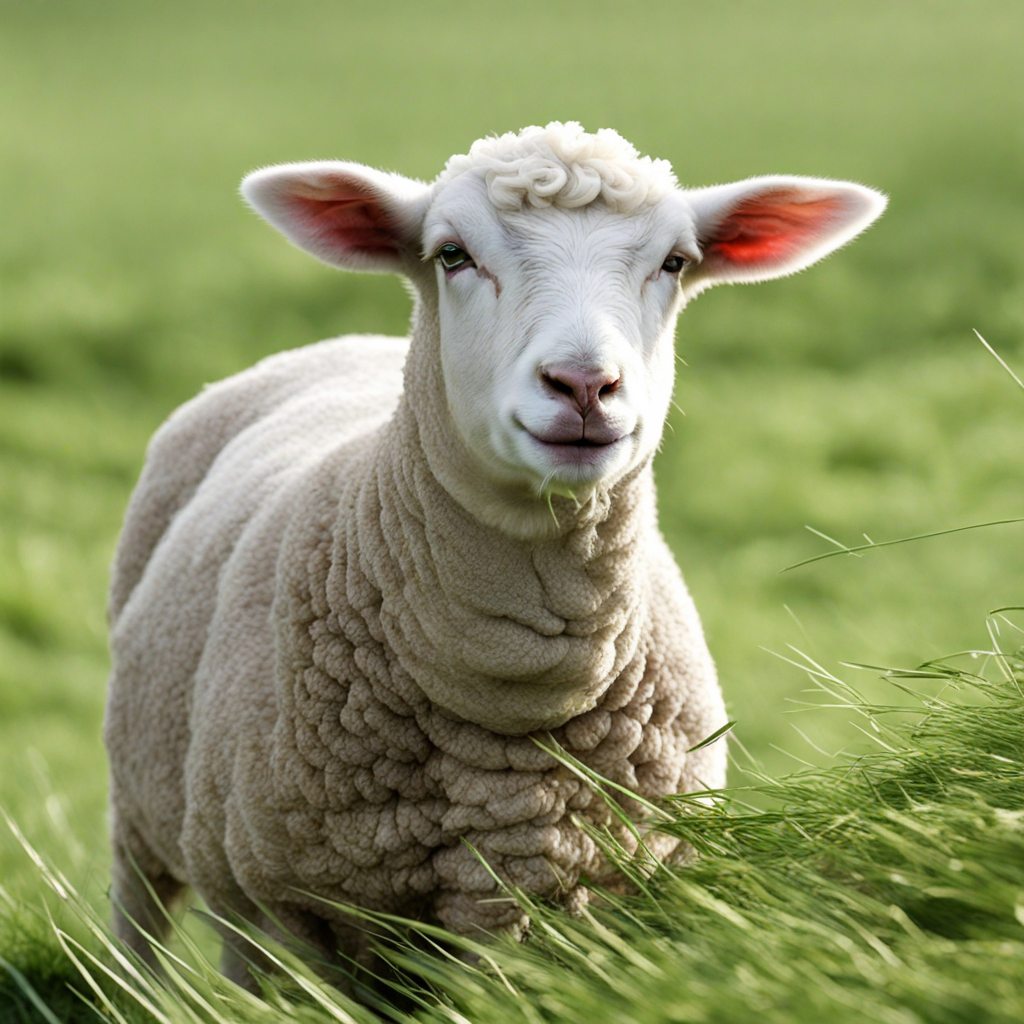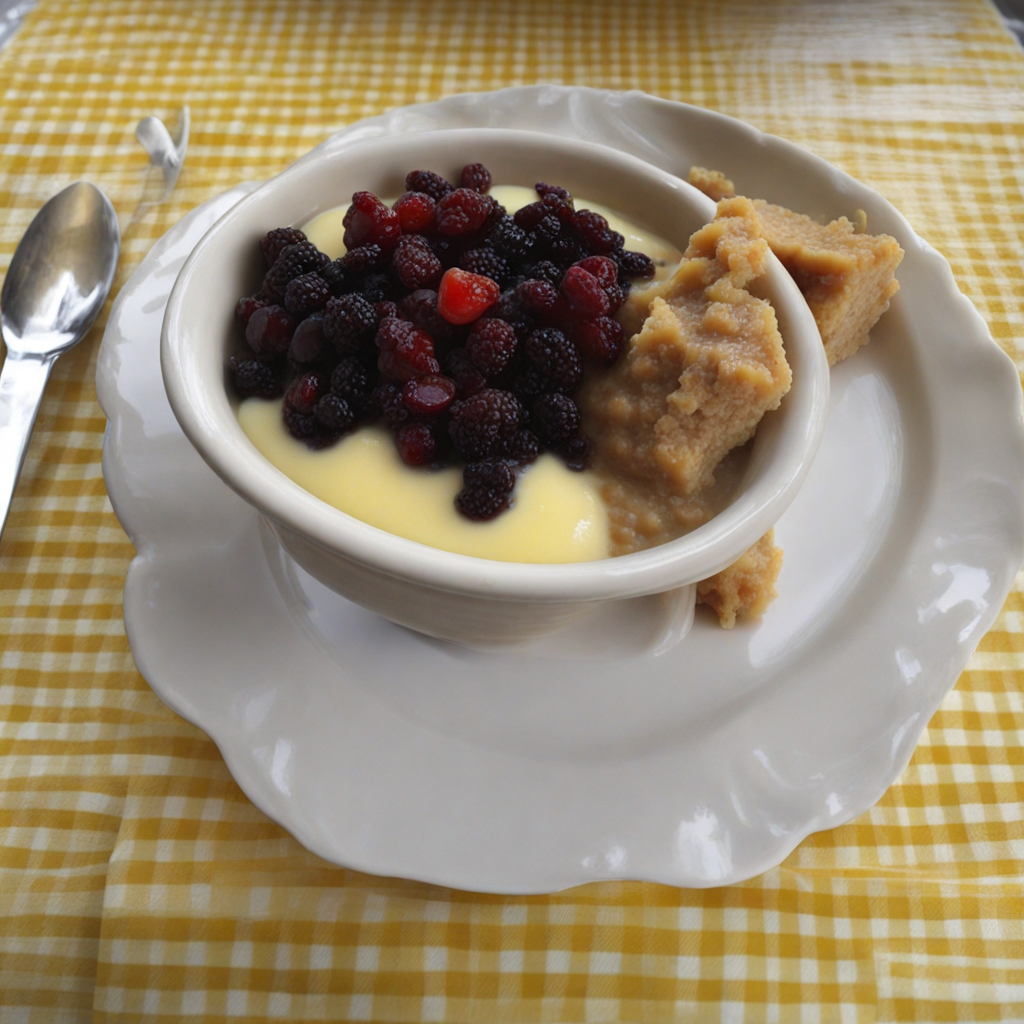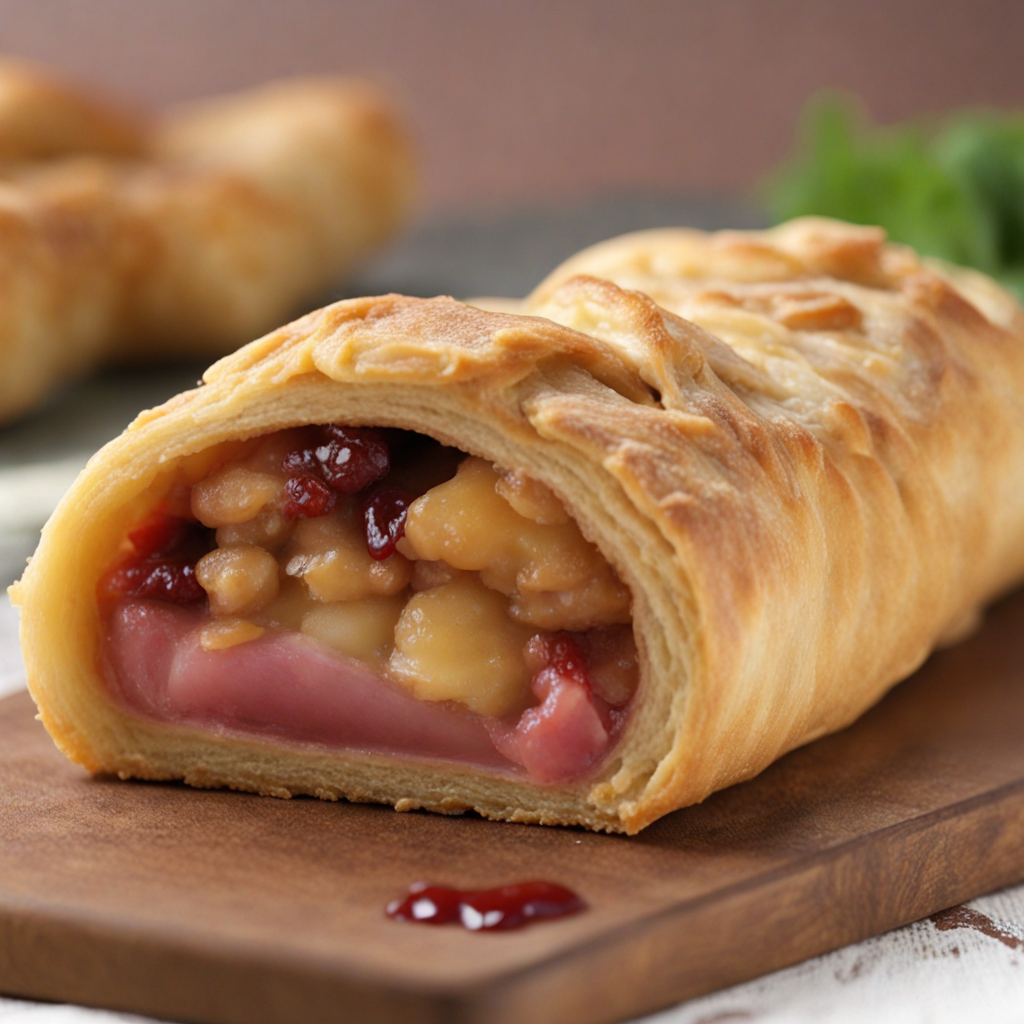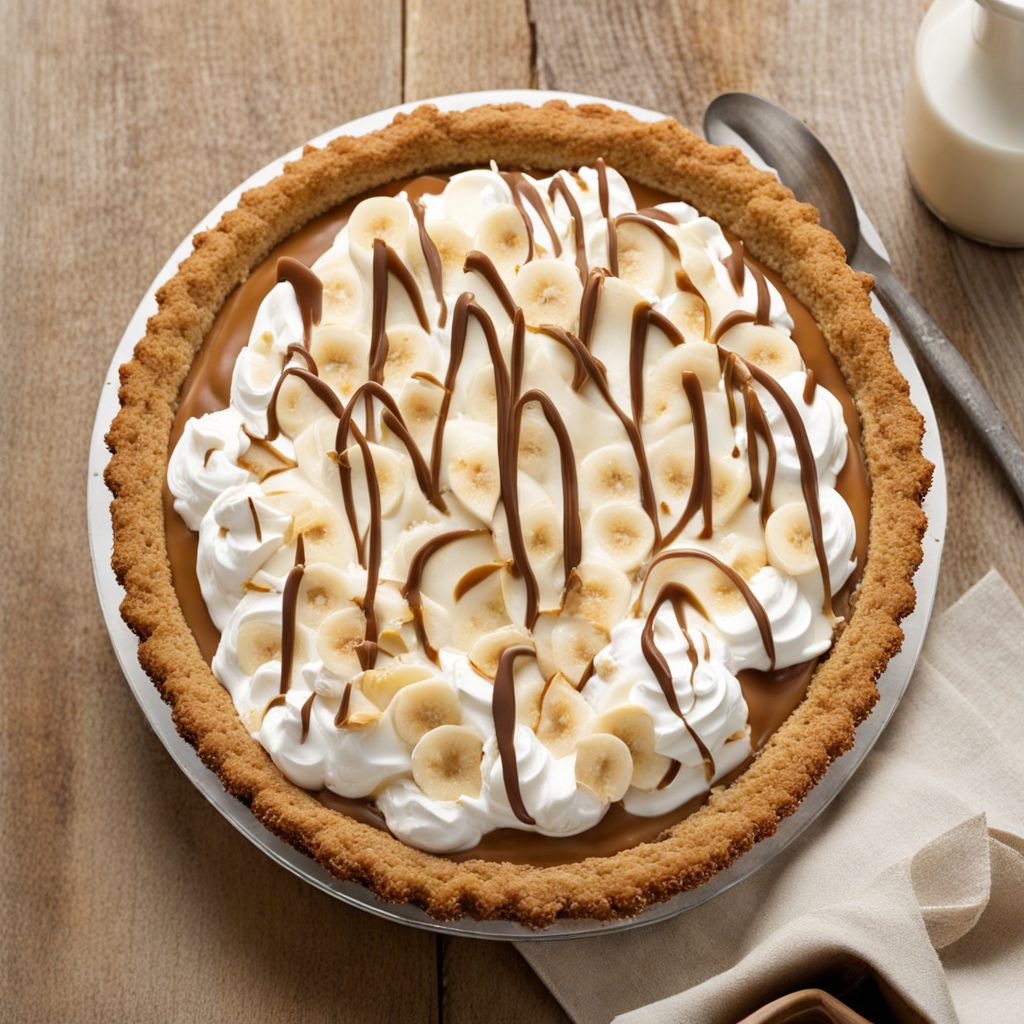Ploughman’s Lunch
Ploughman’s Lunch is a quintessentially British dish that embodies the rustic charm and simplicity of pub food. Traditionally enjoyed by farm workers during the midday break, this hearty meal is a delightful assortment featuring a variety of ingredients that come together in a satisfying way. At its core, a Ploughman’s Lunch typically includes slices of robust, aged cheese—often a strong cheddar or a creamy Stilton—paired with crusty bread or a fresh baguette, providing a perfect vehicle for the rich flavors of the cheese. Alongside the cheese and bread, you will frequently find a selection of accompaniments that elevate the experience. Tangy pickles or chutneys, such as Branston pickle, add a zesty kick that contrasts beautifully with the creamy cheese. Slices of juicy tomatoes and crunchy cucumbers lend freshness, while hard-boiled eggs contribute a protein-packed element. Some variations of the Ploughman’s Lunch may even include slices of cured meats, like ham or salami, enhancing the savory aspect of this delightful platter. The beauty of the Ploughman’s Lunch lies in its versatility and the opportunity to customize it to your taste. It's a dish that invites creativity, allowing you to experiment with different cheeses and accompaniments, such as apples, nuts, or seasonal fruits. Perfectly paired with a pint of local ale, this meal is not only a reflection of British culinary traditions but also a celebration of quality ingredients and simple flavors. Whether enjoyed in a cozy pub or recreated at home, a Ploughman’s Lunch is a delightful way to experience a slice of British culture.
How It Became This Dish
The Ploughman’s Lunch: A Delicious Slice of British Culinary Heritage The Ploughman’s Lunch is a quintessential British meal, evoking images of rustic countryside pubs, sun-dappled fields, and hearty fare designed for the working man. This simple yet satisfying dish, usually comprising crusty bread, cheese, pickles, and sometimes cold meats or salad, has become a staple of British pub culture. Its origins, cultural significance, and evolution over time paint a rich tapestry of social history and culinary tradition. Origins The roots of the Ploughman’s Lunch can be traced back to medieval England, where the idea of a simple meal for laborers is well-documented. The term “ploughman” refers to a farmer or agricultural worker, and the meal was designed to be a quick and nutritious option for those working in the fields. Historically, laborers would pack a meal that could easily be transported and consumed during a break in the fields. Evidence of this practice dates back to at least the 12th century, when the “ploughman’s meal” was likely a combination of bread, cheese, and ale. The traditional ingredients were affordably sourced, making it a popular choice among rural workers. Bread would be the staple, while cheese – particularly hard cheeses like Cheddar or Gloucester – provided protein and sustenance. Pickled vegetables or chutneys often accompanied the meal, introducing flavors that complemented the simple fare. Cultural Significance The Ploughman’s Lunch became particularly emblematic of British agricultural life, symbolizing the connection between the land and the people who worked it. As the Industrial Revolution transformed the landscape of Britain in the late 18th and early 19th centuries, many rural workers moved to urban areas in search of work, and the cultural ties to the countryside began to fade. However, the Ploughman’s Lunch retained its significance as a representation of traditional British values, emphasizing simplicity, quality ingredients, and a connection to the land. In the 20th century, the Ploughman’s Lunch witnessed a resurgence, particularly during the post-World War II era, when there was a renewed interest in local food and traditional cooking. The meal became a popular option in pubs, where it was marketed as a wholesome, hearty choice for patrons looking to enjoy a taste of the countryside. As more people began to travel and explore rural England, the Ploughman’s Lunch became synonymous with the British pub experience, drawing in both locals and tourists alike. Development Over Time The Ploughman’s Lunch as we know it today was popularized in the 1960s and 1970s. In 1960, the British Cheese Bureau launched a campaign to promote the meal, emphasizing the importance of cheese in British cuisine. This initiative coincided with a growing interest in local produce and traditional British dishes, leading to the Ploughman’s Lunch gaining prominence on pub menus across the country. During this time, the meal began to evolve with the addition of various ingredients and accompaniments. While the traditional components – bread, cheese, and pickles – remained, other items such as apples, boiled eggs, and salad garnishes became commonplace. The variety of cheeses also expanded, with Cheddar being the most popular, but options like Stilton, Red Leicester, and Brie gaining traction as well. This diversification reflected the broader changes in British food culture, influenced by international flavors and culinary innovations. The Ploughman’s Lunch has also seen adaptations in response to contemporary dietary preferences and trends. Vegetarian and vegan options have emerged, with plant-based cheeses and spreads offering alternatives for those who avoid animal products. Similarly, gluten-free bread options have made the meal accessible to a wider audience, ensuring that the Ploughman’s Lunch remains relevant in modern dining. The Ploughman’s Lunch Today In contemporary British culture, the Ploughman’s Lunch is celebrated as a symbol of comfort and tradition. It is often featured on menus in country pubs, bistros, and even upscale restaurants, where chefs may elevate the dish with artisanal bread, house-made pickles, and a selection of local cheeses. This evolution reflects a growing appreciation for provenance and culinary craftsmanship, as chefs strive to showcase the best of British produce. Moreover, the Ploughman’s Lunch has transcended its humble beginnings, becoming a cultural icon that embodies the spirit of British hospitality. The meal is frequently enjoyed as part of leisurely afternoons spent in pubs, accompanied by a pint of local ale or cider. It has also found its way into picnic baskets, served at gatherings and outdoor events, becoming a versatile offering that appeals to a wide array of palates. Conclusion The Ploughman’s Lunch is not merely a meal; it is a narrative of British history, culture, and identity. From its origins as a simple sustenance for laborers to its status as a cherished pub staple, this dish encapsulates the values of community, tradition, and quality. As the culinary landscape continues to evolve, the Ploughman’s Lunch stands as a testament to the enduring appeal of simple, hearty food that connects people to their roots and each other. Whether enjoyed in a rustic pub or a modern café, the Ploughman’s Lunch remains a delicious slice of British heritage, inviting all who partake to savor its rich history and wholesome flavors.
You may like
Discover local flavors from United Kingdom


